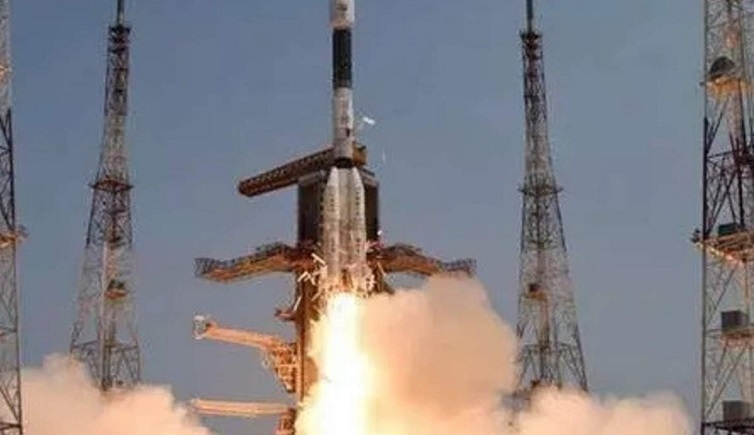GSLV-F12PLACES 2NDGENERATIONSATELLITEINTO ORBIT
| Date :30-May-2023 |

SRIHARIKOTA, (AP) :
THE Indian Space Research
Organisation (ISRO) on Monday
successfully launched and put
into Geosynchronous Transfer
Orbit the first of a series of its
second generation navigation
satellites using a GSLV rocket.
Subsequent orbit-raising
manoeuvres will take NVS-01
navigation satellite into the
intended geosynchronous orbit,
ISRO said. NVS-01 would augment the country’s regional navigation system, providing accurate and real-time navigation.
At the end of a 27.5 hour countdown, the 51.7 metre tall, 3-stage
Geosynchronous Satellite
Launch Vehicle with a cryogenic
upper stage, lifted off at a prefixed time of 10.42 am from the
second launch pad at the spaceport here, located about 130 km
from Chennai. This was GSLV’s
15th flight.
The launch of the NVS-01
is significant as it would
ensure the continuity of
NavIC (Navigation with
Indian Constellation) services -- an Indian regional
satellite navigation system,
similar to GPS, providing
accurate and real-time navigation. Signals from NavIC
are designed to provide user
position accurate to better
than 20 metres and timing
accuracy better than 50
nanoseconds.
ISRO Chairman S
Somanathcongratulatedthe
entireteamforthe“excellent
outcome” of the mission.
“NVS-01 has been placed
in precise orbit by GSLV.
Congratulationstotheentire
ISRO team for making the
mission happen,” he said in
hispost-launchaddressfrom
the Mission Control Centre.
Today’ssuccesscameafter
the GSLV F10 “debacle”, he
said referring to the anomaly in the cryogenic stage of
the launch vehicle in August
2021, following which the
then mission could not be
fufilled.Heexpressedjoythat
“corrections in cryogenic
stageandlessonslearnthave
really paid benefits” and
creditedthe Failure Analysis
Committee for addressing
the problem. Somanath further said NVS-01 is a second
generation satellite with
additional capabilities. The
signals will be more secure
andacivilianfrequencyband
hasbeenintroduced,hesaid.
